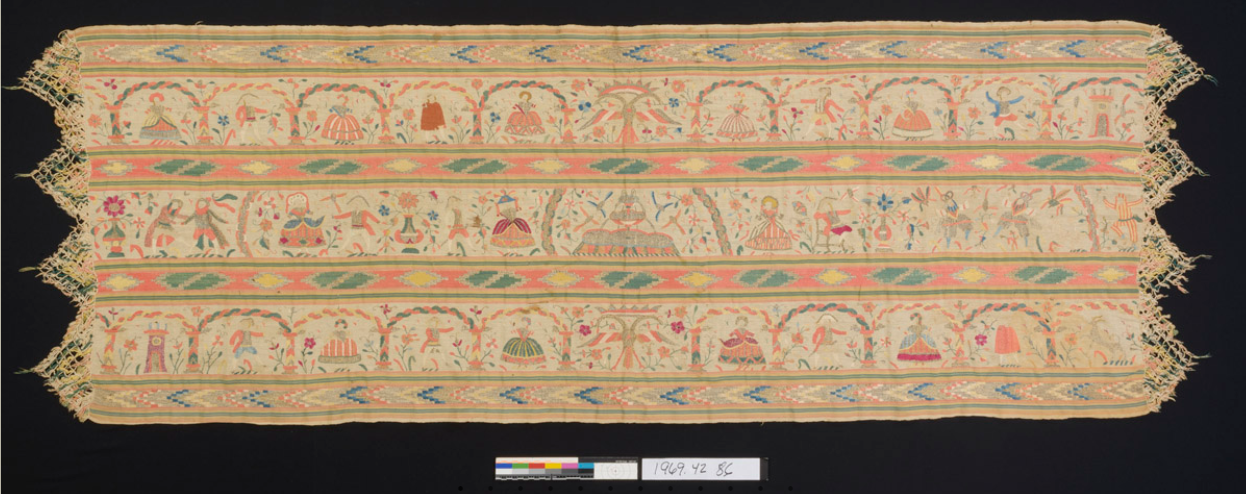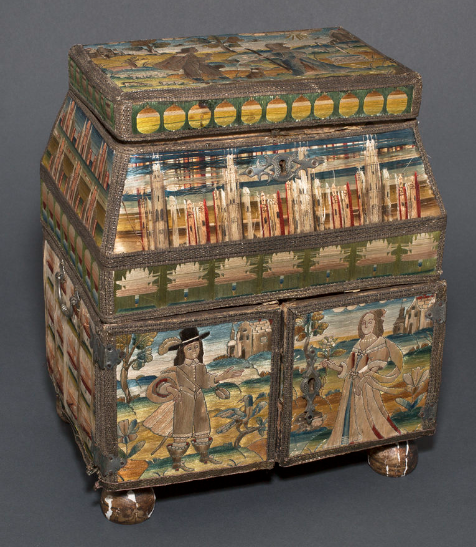American Ceramic Circle 2023 Symposium | November 29, 2023
I recently was offered an amazing opportunity to take a behind-the-scenes tour with Dr. Laura Johnson at the Winterthur Museum in Wilmington, Delaware. This was my first time at Winterthur and I was very excited for what she would show me. It was a cool and blustery autumn day, the grass was still bright green but sprinkled with crimson leaves throughout the campus. I started at the Visitor Center and took the shuttle to the Museum where I met Dr. Johnson. She was immediately personable and welcoming. I was led through a maze of rooms, doors, and elevators to a moderately sized textile storage room with dim lighting. There Dr. Johnson began opening drawer after drawer of unique and surprising finds!
Among my favorites was a collection of 17th century hand-worked table caskets. Similar to today’s jewelry box, a table casket was made to hold a young lady’s personal effects, including needlework tools, jewelry, and anything else she deemed to be personal or private. A stunning example, dated from 1650-1700 (1970.0507), was a bequest from Francis Henry du Pont. Composed of wood, glass, silk, and paper, the casket depicts figures on the outer doors which open to a series of silk-worked drawers. The lid, having a mirrored interior, is fitted inside with a series of bottles. Despite the obvious functionality, the piece displays a remarkable example of skill and creativity with a variety of stitches and designs.
Another piece that caught my attention was a Mexican rebozo, a type of shawl worn by all classes in Mexican society. This particular example was made in Mexico City, circa 1750 (1969.4286). Comprised of silk, gold and silver thread on silk and cotton ground, it is also a bequest of H.F. Du Pont. The really interesting thing to note about this rebozo is the scene of figures, flora, and borders it depicts. What I found most compelling is that this rebozo is still somewhat a mystery.

Mexican rebozo, made in Mexico City, circa 1750 (1969.4286)
Dr. Johnson explained that it is believed that the depiction is taken from a popular novel or play of the period, but to date it has not been determined. The story appears to be presented in sequential order, with each arcade displaying a part of the narrative. One figure, donning a red and white vertical striped jumper, is depicted throughout the shawl interacting in various scenes. Dr. Johnson suggested that this figure is likely the key to identifying the depicted story. What do you think – can you identify this narrative? Tell us what you think at @brunkauctions on Instagram or Facebook.
A special thank you to Dr. Laura Johnson and the Winterthur Museum, Library & Garden
Tara L. Quell, ISA AM
Decorative Arts Specialist
Brunk Auctions
World-Class Consignments and Exceptional Results
